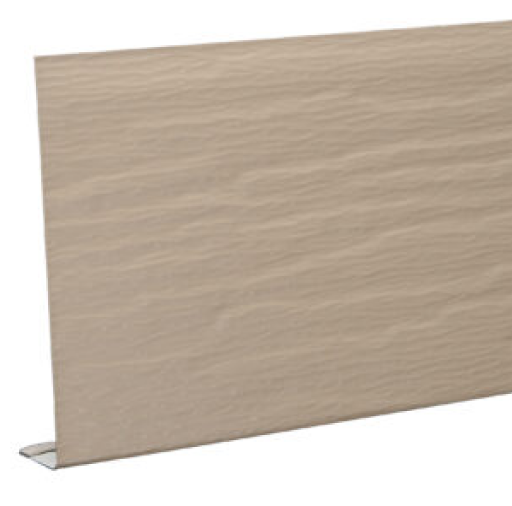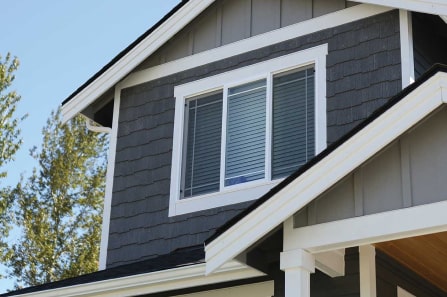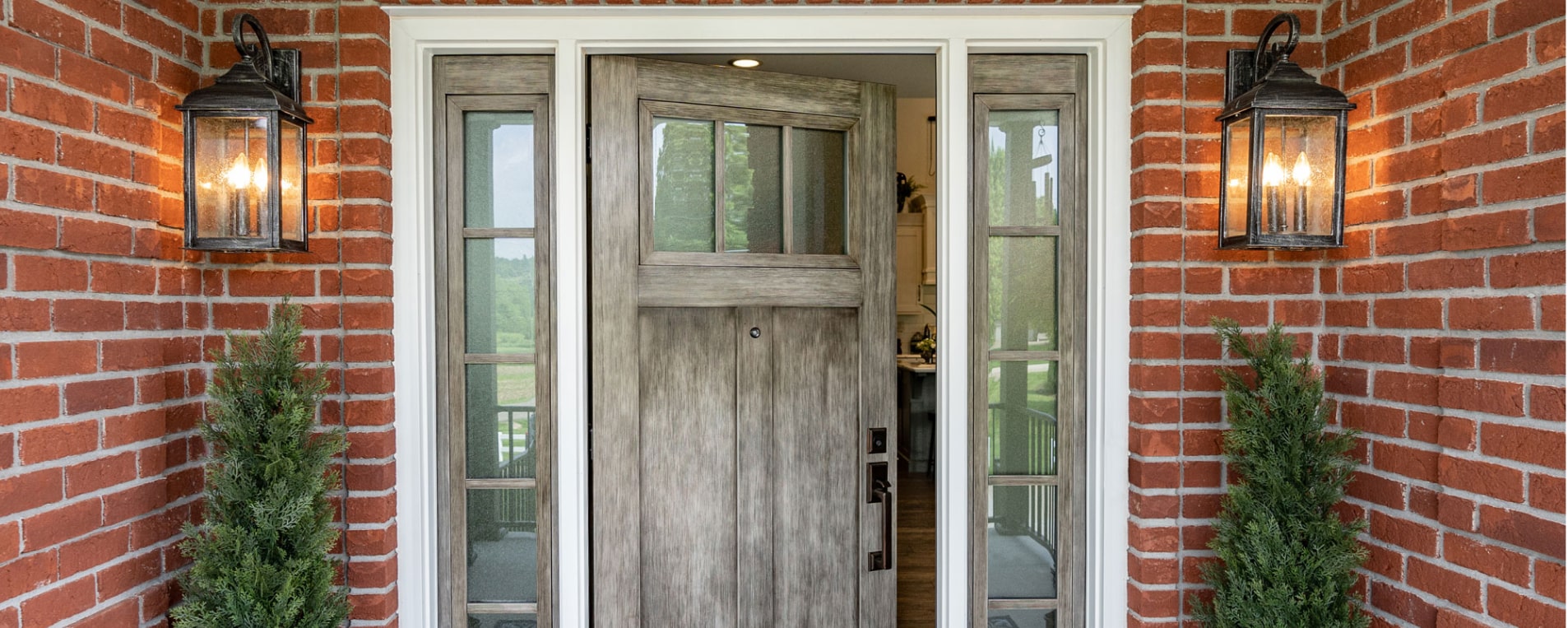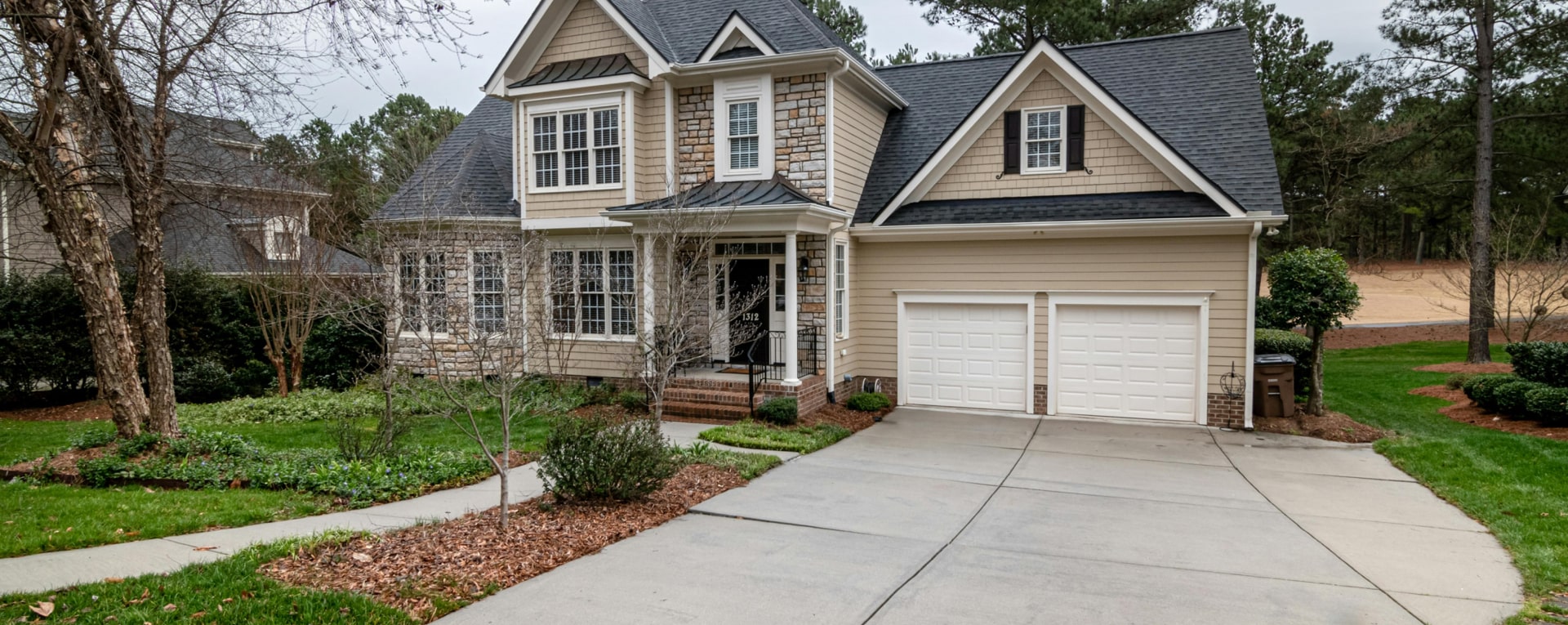Siding Replacement Options in Wisconsin

LP® Smartside® Siding
E2 Home Solutions proudly offers LP SmartSide siding, a top choice for homeowners and builders. Featuring WeatherLock® Technology, LP SmartSide resists harsh weather, impact, and everyday wear while mimicking the natural beauty of wood. Available in a variety of colors and textures, it allows for personalized customization to match your style. Choose LP SmartSide with e2 Home Solutions for a durable, attractive, and energy-efficient exterior that stands the test of time.

ClimaForce™ Vinyl Siding
Vinyl Siding for Wisconsin Homes Transform your home’s exterior with quality vinyl siding installed by E2 Home Solutions. Variform by Ply Gem has been trusted to provide the vinyl siding styles, colors, durability, and lasting performance homeowners expect. With one of the industry’s broadest color palettes, virtually maintenance-free performance and an impressive limited lifetime warranty,…

Alsco™ Soffit and Fascia
Soffit and Fascia for Wisconsin Homes Soffit and fascia play a crucial role in the construction and longevity of a home, serving both functional and aesthetic purposes. At E2 Home Solutions, we recognize that proper installation of soffit and fascia ensures optimal ventilation, preventing moisture buildup and protecting your roof structure from damage. These components…

Gutter Protection
Why Wisconsin Homes Need Reliable Gutter Protection Between lake-effect downpours, heavy autumn leaf drops, and bone-chilling freeze-thaw cycles, Wisconsin puts gutters to the test. When debris piles up, meltwater has nowhere to go—causing downspout overflow, fascia rot, and even cracked foundations. A dependable gutter-guard system keeps water moving so you can enjoy every season without…
The Importance of Quality Siding in Wisconsin
Quality siding is essential for protecting Wisconsin homes from the state’s harsh winters, heavy storms, and fluctuating temperatures. It enhances curb appeal, improves energy efficiency, and adds long-term durability to your home. E2 Home Solutions provides expert siding installation and replacement, ensuring your home stays well-insulated, weather-resistant, and visually stunning year-round.

E2 Home Solutions: Your Trusted Wisconsin Siding Installer
Choosing the right siding installer can be a game-changer for your home’s appearance, durability, and energy efficiency. If you’re searching for a Wisconsin siding installer that will provide an exceptional experience, E2 Home Solutions is the name to trust.
Experienced Installers
Our team of master installers provide an exceptional experience throughout the entire process start to finish. E2 Home Solutions is made up of master certified professionals who are trained to deliver quality, precision and efficiency. Each project is handled with care, ensuring no detail is overlooked. We will keep working until you have experienced exceptional service.
High-Quality Materials
Not all siding is created equal. E2 Home Solutions works with industry-leading materials, including:
Vinyl Siding – Affordable, low maintenance, and available in a variety of colors.
Soffit and Fascia – Compliments any siding style or designs choices.
LP SmartSide Siding – Engineered wood siding that works for many homes in southeastern Wisconsin.
Comprehensive Services
Whether you need siding repair, replacement, or a brand-new installation, E2 Home Solutions has you covered. We offer the following services:
Sidings inspections and assessments
Emergency storm damage repairs
Siding installation
Custom siding designs for residential properties
Local Expertise
E2 Home Solutions is deeply rooted in Wisconsin. With years of experience handling projects across Southeastern Wisconsin, our team understands the region’s unique weather challenges and building codes. Wisconsin weather can be unpredictable, with freezing winters and humid summers. E2 Home Solutions offers insulated siding options that help regulate indoor temperatures, leading to lower energy bills and improved comfort throughout the year.
Transparent Pricing
No one likes surprises when it comes to expenses. E2 Home Solutions provides detailed, upfront estimates so you know exactly what to expect. Our competitive pricing ensures you get the best value without compromising quality.
Looking for siding installers in Wisconsin?
E2 Home Solutions provides durable, high-quality siding installed by expert craftsmen, enhancing your home’s protection and curb appeal for years to come. Contact us today for premium craftsmanship and an exceptional experience!
How Much Does a Siding Installation Cost?
Fast and painless siding replacement estimates.
Wisconsin Siding Price Estimates
The average cost of siding installation in Wisconsin varies depending on the material, home size, and labor costs. On average, homeowners can expect to pay between $5,000 and $20,000 for siding replacement, with costs typically ranging from $5 to $15 per square foot. Vinyl siding and engineered wood lap siding are two of the most common materials. Factors like insulation, removal of old siding, and customization can also impact the final price. For a more accurate estimate specific to your home, Contact us today!
Siding Pricing Chart
| Square Footage | Vinyl | LP Smartside | Cedar |
|---|---|---|---|
| 0 - 1000 Sq. ft | $5,900 - $11,500 | $9,900 - $19,000 | $15,000 - $30,000 |
| 1000 - 1750 Sq. ft | $8,000 - $14,000 | $14,000 - $22,600 | $21,000 - $33,990 |
| 1750 - 2500 Sq. ft | $11,000 - $18,000 | $19,000 - $29,120 | $30,000 - $43,760 |
| 2500+ Sq. ft | $16,350 - $29,220 | $28,220 - $47,800 | $42,000 - $71,200 |
FAQs Wisconsin Siding Installation
Can I customize the color and style of new siding?
Yes! We offer a vast selection of colors and textures to match your home’s aesthetic and your personal taste. Our design experts will work with you to choose the perfect combination that enhances your home’s curb appeal.
What is the difference between repairing and replacing siding?
Repairing siding is a cost-effective option for fixing minor damages such as cracks, holes, or warping. However, if your siding is extensively damaged, outdated, or no longer providing adequate insulation, replacing it with new siding may be the better long-term solution. Our team can assess your current siding and recommend the best course of action.
E2 Home Solutions Exterior and Interior Services

Wisconsin Bathroom Installer
Bathroom Remodeling Options in Wisconsin Vanity Vanity Installer In Wisconsin Learn more Shower Shower Installer In Wisconsin Learn more The Importance of Quality Bathrooms in Wisconsin A well-designed bathroom enhances comfort, functionality, and home value, especially in Wisconsin’s varying climate. Quality materials and expert installation ensure durability, efficiency, and a modern aesthetic. E2 Home Solutions…

Wisconsin Door Installer
Entry Door Installer in Wisconsin Storm Door Installer in Wisconsin Learn More Learn More Sliding Glass Patio Door Installer in Wisconsin Learn More The Importance of Quality Doors in Wisconsin Quality doors are essential for Wisconsin homes, providing security, energy efficiency, and protection against the state’s harsh weather, from freezing winters to humid summers. A…

Wisconsin Roofing Installer
Roofing Installer in Wisconsin Titan XT® Asphalt Shingles Wisconsin Roofing Installer A proprietary reinforcement that gives their enhanced wind performance. This unique poly-fabric reinforces the shingle for an added layer of protection and provides an anchor for the nails to embed in, locking them tightly to the deck. A proprietary reinforcement gives these shingles enhanced…

Wisconsin Siding Installer
Siding Replacement Options in Wisconsin LP® Smartside® Siding E2 Home Solutions proudly offers LP SmartSide siding, a top choice for homeowners and builders. Featuring WeatherLock® Technology, LP SmartSide resists harsh weather, impact, and everyday wear while mimicking the natural beauty of wood. Available in a variety of colors and textures, it allows for personalized customization…

Wisconsin Window Installer
View Our Window Styles Double-Hung Casement Horizontal Slider Picture Awning Single-Hung Bay / Bow Radius The Importance of Quality Windows in Wisconsin Living in Wisconsin means experiencing a full spectrum of weather—from freezing winters to hot, humid summers. That’s why having high-quality windows in your home is not just a luxury; it’s a necessity. Quality…
What E2 Home Solutions Stands For
E2 Home Solutions is driven by a clear mission: to offer high-quality, customized, and durable home solutions that enhance curb appeal, boost property value, and improve the overall quality of life for our customers. Guided by the principles of ETHOS we bring:
Expertise
Tenacity
Hustle
Optimism
Service
Why the Siding Installation Process Matters in Wisconsin
Siding serves as your home’s first line of defense against weather conditions such as rain, snow, and wind. Proper installation ensures that the siding effectively repels moisture, preventing water infiltration that can lead to structural damage, mold, and mildew. In Wisconsin, where buildings must withstand horizontal wind pressures of at least 20 pounds per square foot, as specified in the state’s building codes, correct siding installation is essential to meet these standards. These standards are listed more in depth here: SPS 321.24 Exterior Covering.
However, the laws can be confusing, which is why we will help summarize the information for you here:
Exterior Walls Need to Be Weatherproof
Rain and snow can be relentless, especially in regions that experience heavy precipitation. If your exterior walls are not properly sealed or constructed with water-resistant materials, water can penetrate the surface, leading to issues like rot, mold, and weakened structural integrity. Waterproof barriers, sealants, flashing, and quality siding can help prevent these costly damages. Investing in professional installation ensures that these components work together to keep your home safe from moisture-related issues.
Flashing: The Key to Water Diversion
Flashing is a thin, corrosion-resistant material—typically made of metal, rubber, or specialized waterproof membranes—that is strategically placed in joints and seams of a home’s exterior. Its primary function is to direct water away from vulnerable areas, preventing leaks and reducing the risk of mold, rot, and structural damage under the siding.
Flashing Requirements:
- Must be corrosion-resistant (it shouldn’t rust over time).
- Should be installed at key places to keep water from penetrating walls.
- Needs to extend past the outer wall so water doesn’t sneak back in.
Where Flashing Is Required:
- Above doors and windows (unless they have built-in flashing).
- Where chimneys or brick walls connect to wood-frame walls.
- Under and at the ends of any masonry, wood, or metal sills.
- Above any wood trim that sticks out.
- Where decks, porches, or stairs attach to a wooden house.
- At the connection of walls and roofs.
- At built-in gutters.
- Along the bottom of doors that are above the ground (such as when a deck might be added later).
Extra Flashing Notes:
- Where a roof meets a vertical wall (like a dormer), flashing needs to overlap the roof by at least half an inch.
- If the side of a roof meets a wall, the flashing must direct water away from the wall and into the gutter.
Water-Resistant Barriers (WRBs): A Crucial Defense Layer
Water-Resistant Barriers (WRBs) play a crucial role in shielding a home’s structural components from moisture damage. By preventing water from seeping into wood or metal walls, WRBs help reduce the risk of mold, rot, and structural deterioration. Proper installation is key to ensuring long-term durability and energy efficiency. The barrier must cover the entire wall, from top to bottom, before adding the final exterior covering.
What Materials Can Be Used for WRBs?
- House wraps (like Tyvek)
- Spray-on waterproof coatings
- Asphalt-saturated felt (aka “tar paper”)
- Foam sheathing with taped joints
Important Note: Duct tape is NOT a recommended option for sealing WRBs!
Sealants: Small Details That Make a Big Difference
Sealants play a crucial role in siding installation by preventing water infiltration around small gaps and attachment points. While tiny holes from nails and screws don’t require sealing, gaps up to 5 square inches should be sealed with durable caulk or a similar waterproof material to block moisture and air leaks. For larger openings, flashing should be used to provide long-term protection, ensuring the siding remains weather-resistant and energy-efficient. Proper sealing helps maintain the integrity of the building envelope, reducing the risk of water damage and improving overall durability.
Sealing Around Holes and Attachments:
- Small holes (from nails and screws) don’t need sealing.
- Small gaps (up to 5 square inches) should be sealed with a caulk or equivalent.
- Larger gaps need flashing, just like walls and roofs.
Other Contributing Factors to Siding Longevity
Insulation: Keeping Your Home Energy Efficient
Insulation plays a critical role in regulating your home’s internal temperature and preventing heat loss during Wisconsin’s harsh winters. Insulation (the barrier that prevents air from penetrating the walls) can’t be installed inside the walls until windows, doors, and the roof (with at least an underlayment) are installed, and a waterproof layer is in place. A good example of a waterproof layer is foam sheathing with seams that are taped up permanently to protect your home’s internal walls. This step ensures that your home remains energy-efficient while maintaining proper moisture control.
Proper Ventilation: Avoiding Trapped Moisture
While siding protects against external moisture, proper ventilation within the walls ensures that trapped moisture can escape. Without adequate airflow, humidity can build up, leading to mold growth and weakening the structural components of the home. Installing vented soffits, ridge vents, and weep holes in brick siding can significantly improve airflow and prevent condensation buildup.
Why Does The Siding Installation Process Matter?
These rules help keep buildings dry and strong. Water leaks mean mold, rot, and expensive repairs, which can compromise the safety and value of your home. Preventing these issues by maintaining and replacing siding ensures your home remains protected for years to come. Whether you’re building a new home or upgrading existing siding, following proper installation guidelines is crucial for long-term durability and performance.
Choosing the Right Professional for Siding Installation
Given the complexity of siding installation and the strict building codes in Wisconsin, hiring an experienced professional is essential. A skilled contractor will:
- Ensure proper installation according to state codes.
- Use high-quality materials suited for Wisconsin’s harsh climate.
- Conduct a thorough inspection to prevent potential water intrusion points.
- Offer warranties for both materials and labor, giving homeowners peace of mind.
Final Thoughts
Siding installation is not just about aesthetics—it is a fundamental part of your home’s protection against the elements. With Wisconsin’s extreme weather conditions, ensuring that your siding is installed correctly will prevent costly repairs, improve energy efficiency, and extend the life of your home. By using quality materials, proper sealing techniques, and professional installation, you can maintain a safe and weatherproof home for years to come.

